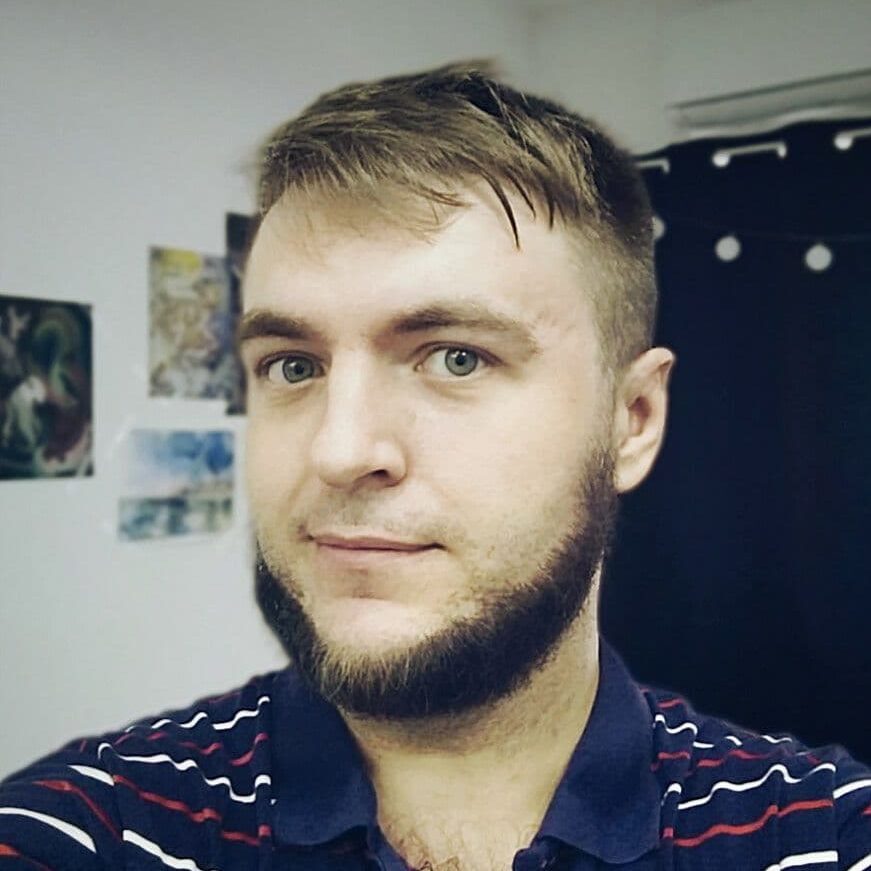

Українською читайте тут.
Detector Media aims to examine the purpose behind Russia's deliberate attacks on civilians without any military justification and the consequences this leads to.
On September 11, at the United for Justice conference dedicated to the shelling of civilian infrastructure, President Volodymyr Zelenskyy said that Russia had committed 137,000 registered war crimes in Ukraine. Since the beginning of the full-scale invasion, Russian forces have launched massive attacks on Ukrainian hospitals, schools, hotels, public utility facilities, and ordinary homes. Russian official agitational propaganda justifies these strikes by piling up different versions—it claims that the destruction was allegedly caused by Ukrainian air defense or that military personnel were hiding in civilian facilities. However, propagandists sometimes postulate that the purpose of such strikes is terror and intimidation of Ukrainians into forced surrender.
"Terror to exhaustion"
There are many definitions of the term "terrorism," which are used depending on the context in which the term is applied. For example, U.S. government reports use the following definition of terrorism:
"Premeditated, politically motivated violence perpetrated against non-combatant targets by subnational groups or clandestine agents, usually intended to influence an audience."
This understanding of terrorism stems from the experience of American domestic and foreign policy over the past decades, particularly the challenges Americans faced, especially after September 11, 2001. For many years, terrorism in the U.S. and many other countries was primarily associated with radical networks that commit terrorist acts as their main, if not sole, strategy.
Sociologist and historian Charles Tilly offers a broader approach to defining terrorism as a strategy that can be used by "a wide range of actors, whose motives, means, and organizational methods vary greatly." Among these actors are not only the aforementioned radicals but also openly operating state structures, armies, or intelligence services.
"Politicians who dedicate their entire lives to terror carry out only a small fraction of all terrorist acts; the vast majority of terrorists simultaneously, previously, and/or later engage in other forms of politics or do not engage in politics at all," writes Tilly in his article "Terror as Strategy and Relational Process."
This approach aligns with the practice where a state can simultaneously wage an open war, employ a wide range of diplomatic, economic, and propaganda efforts, and at the same time engage in terrorist activities aimed at the same objectives as the other methods. The 1987 Geneva Declaration on Terrorism provides a broad definition of "state terrorism" that includes both military exercises aimed at intimidation and direct attacks that endanger the civilian population. Russian strategy in Ukraine fully corresponds to this understanding of terror.
According to statistics provided by the Strategic Communications Center of the Armed Forces of Ukraine, three out of four Russian missile strikes against Ukraine hit civilian objects. It is a violation of international humanitarian law and terror against the civilian population of Ukraine. The Russian missile attack on Lviv on September 4, 2024, is just one recent example of Russian terror against civilians during the Russian-Ukrainian war. During the attack, seven people died, more than 60 were injured, and almost 190 houses were damaged or destroyed, some of which are architectural monuments. Mykola Beleskov, senior analyst of the "Come Back Alive" Foundation (Повернись живим), assessing the causes and consequences of the attack on Lviv, wrote:
"The adversary is implementing a comprehensive strategy of attrition against Ukraine—combining military (frontline actions and strikes in the rear) and non-military tools (information campaigns) to undermine the will to continue resistance. Moscow is betting on this comprehensive strategy of attrition, refusing any negotiations."
Statistics on the damage from Russian shelling: three-quarters of the targets are civilian objects. Source: Strategic Communications Dept of the Armed Forces of Ukraine.
Shelling of Civilians as a Means of Propaganda Messaging
On July 8, 2024, Russian forces launched a massive missile attack on Ukrainian territory. Several cities were targeted, including Kyiv, where missiles hit the largest children's hospital in Ukraine, "Okhmatdyt" (three people killed, including one medical worker, one patient’s relative, and one child who died later), the medical center "Adonis" (nine killed), a residential building (13 killed, including five children), and other objects. In Kryvyi Rih, an administrative building of a factory was attacked, resulting in ten deaths. In the case of Okhmatdyt, the moment of impact was captured on video, which allowed for the identification of the Russian X-101 missile and ruled out propaganda claims of "air defense work." The likelihood of "accidental" targeting is also minimal, as several similar missiles simultaneously struck a facility that Russians consider military—the "Artem" factory buildings.
After the attack, a seemingly logical question might arise: Why would Russia spend expensive precision missiles on strikes against a children's hospital and other objects if it does not bring any conceivable benefit to its army? Is the Russian command really willing to kill children "just for fun" out of pure sadism and a desire to destroy Ukrainians? Interestingly, Russian propagandist Vladimir Solovyov posed this very question on state television to deny the possibility of such an attack:
"A simple question: why would Russia strike a hospital? They answer: because Russia is infernal evil, and Russia does it because it can do it," said Solovyov.
Obviously, Solovyov’s audience does not view the Russian leadership as "infernal evil," so an attack on Okhmatdyt would seem illogical and, therefore, impossible in their view.
However, the reality is that this strike, along with other deadly shelling of civilian targets on that day and others, serves a clear purpose for Russia. This purpose is terror—intimidating the Ukrainian population and conveying the message that, as long as the war continues, anyone can be targeted anywhere. Whether it is an industrial facility, a home, or a hospital, no place is safe, and not only are individuals at risk, but also their children. In this context, the attack on Okhmatdyt is a propaganda act. Like any terrorist act, its purpose is not solely to inflict direct damage but to send a specific message to the audience. In this case, the message is: "Surrender, or we will continue to destroy you."
The official version from the Russian state, according to Putin's spokesperson Dmitry Peskov, is that the strike on Okhmatdyt was the work of "Ukrainian air defense." However, others have offered different explanations. For instance, Andrei Perla, a "political commentator" from the TV channel "Tsargrad," who labels himself as "Orthodox," published an article in which he urged not to even justify such strikes. He wrote that there is no need to mourn for "enemy children":
"The merciless law of war is very simple: such enemies cannot be considered human. We must simply and frighteningly understand that no people are on the other side. Not a single person. Our missiles do not kill people. Not a single person. There are no people there," wrote Perla.
The propagandist called for continuing attacks on Ukrainian cities with the "most powerful weapons we have." And, of course, he suggested a way for Ukrainians to avoid destruction—capitulation. "And then we may, perhaps, pardon you," added the propagandist. Such statements were too blunt even for internal Russian propaganda, and the article was later removed from the "Tsargrad" website. However, the same Solovyov on "Russia 1" on June 6, 2023, outlined the overall goal of Russian actions: "If they want us to show mercy, then they need to switch to our side." He went on to advocate for using violence without remorse, stating that the suffering of foreigners is less important than the suffering of "our own":
"Today, children died in Sevastopol—and you want me to worry about the lives of vile, fat German burghers? French monsieur? Their entire lives are not worth a tear from a Russian child."
The potential goal of the attack on Okhmatdyt becomes even more apparent when considering the reaction it triggered in at least part of Ukrainian society. Some Instagram influencers posted messages criticizing the Ukrainian government for continuing the war, calling for "peace" (without specifying on what terms), and opposing "political games that cost lives." It is unclear whether these influencers were motivated by paid "orders" for such posts or genuine horror and whether the Russian message was successfully conveyed: "You must avoid such events at all costs, so meet all our demands."
In response, Ukrainian doctor and head of the board of trustees of Lviv’s Okhmatdyt hospital, Adriana Malska, posted on her Facebook page after the attack, calling Russians to "calm down their political ambitions" and end the war "by any means" (the post was later deleted). The brutal cruelty of terror can have its own propaganda effect—and the Kremlin understands this well.
Long-term consequences of Russia's infrastructure terror
The systematic attacks on energy and civilian infrastructure that Russia began carrying out in the fall of 2022 can be characterized as a deliberate strategy to destroy critical civilian and energy infrastructure, or "infrastructure terror." By damaging civilian targets and depriving millions of people of access to electricity or water, Russia aims to break the resistance of the Ukrainian people, instill panic among civilians, and force Ukraine to capitulate. According to the Ukrainian Parliament Commissioner for Human Rights, Dmytro Lubinets, this constitutes a violation of the fundamental rights of Ukrainians—such as security, life, and access to clean water.
Infrastructure terror is not a new strategy for Russia in conflicts or wars. During the 2015–2019 Syrian conflict, Russian aviation, supporting Assad’s regime, regularly bombed hospitals and other civilian facilities, significantly complicating aid efforts for civilians. The destruction of civilian infrastructure has been and continues to be a deliberate tactic by Russia to demoralize populations and attempt to break their resistance.
The primary targets of these attacks remain power plants, transformer substations, power lines, and other critical elements of the energy network. Russian strikes have caused widespread electricity outages across most regions of Ukraine, and in some cities, water supply has been limited due to a lack of power for pumping stations or deliberate attacks on water pipelines. A notable example is the destruction of the city’s filtration station in Kramatorsk on February 20, 2024. This attack injured four employees of the Kramatorsk water utility, the sole water provider for the nearly 160,000-resident city, and the work to restore the water supply lasted more than a week.
The restoration of the destroyed infrastructure is complicated by many technical, production, and economic factors. However, the primary threat remains the risk of further Russian attacks on infrastructure and the limited resources available for restoration, including the number of air defense systems and their missile supplies. According to energy expert Maciej Zanievich's report for the Warsaw-based research center "Energy Forum," even under a moderate scenario where Russia does not cause additional damage, there could be a deficit of around 7 GW of electricity during the winter peak demand. Without additional support from Ukraine’s foreign partners, this could lead to severe energy supply disruptions during cold periods. Therefore, Zanievich informs that assisting Ukraine in preparing for the next winter is in the interest of Poland and the EU.
In their report for the Center for Eastern Studies (OSW), researchers Sławomir Matuszak and Marcin Jędrysiak noted that power outages are unlikely to cause a large wave of migration with the onset of cold weather. Still, the situation will depend on how effectively local authorities prepare for winter. According to their assessment, it will take several months to restore at least 2 GW of power, partly through the use of decommissioned equipment from retired power plants, which other countries, including Lithuania, Estonia, and Germany, have promised to transfer to Ukraine.
The bombing of the maternity hospital in Mariupol in March 2022 became a symbol of Russia's atrocities against civilians and indiscriminate attacks on civilian infrastructure. In February 2024, Prime Minister Denys Shmyhal, during a presentation of the damage assessment and recovery needs for Ukraine at the end of 2023, reported that the total economic, social, and other losses for Ukraine amount to around half a trillion dollars.
Part of the infrastructure terror also includes Russian cyberattacks, which can endanger lives by disrupting electricity or water supplies, communication with emergency services, and air threat warning systems. Such attacks occurred even before the full-scale invasion, such as in January 2022, when a large-scale cyberattack using the WhisperGate malware targeted the computer systems of dozens of Ukrainian government institutions. International Criminal Court prosecutors are investigating Russian cyberattacks on Ukrainian civilian infrastructure as possible war crimes during the full-scale invasion. This includes at least four major attacks on energy infrastructure, such as the cyberattack on the telecommunications operator "Kyivstar" at the end of 2023.
Such indiscriminate tactics by Russia violate norms of international humanitarian law, including the Geneva Conventions, which prohibit attacks on civilian objects and infrastructure that have no military significance. Attacks on civilian infrastructure have long-term consequences, not only by provoking mass humanitarian crises that complicate the lives of civilians. The destruction of civilian infrastructure and energy systems also harms the environment. Military actions leave behind contaminated soil and water resources, limiting their use for agricultural purposes and endangering food security not only in Ukraine but also in countries importing Ukrainian agricultural products.
Communicating with the international community about holding Russia accountable for committing "infrastructure terror" is a crucial task for the Ukrainian government. On January 19, 2023, the European Parliament, in its resolution on establishing a tribunal for the crime of aggression against Ukraine, recognized the link between the war and the long-term damage caused to the environment and climate. Currently, there is no separate legal instrument specifically addressing "ecocide." However, Ukraine could advocate for recognizing ecocide as the fifth international crime under the jurisdiction of the International Criminal Court (ICC) or advocate the development of a new convention on ecocide.
Conclusions
"Pure terror" is not just one of Russia's military tactics but also a strategic tool aimed at intimidating the civilian population, provoking humanitarian crises, and delaying the recovery of devastated areas for decades. On September 9, Defence Express reported, citing Iranian officials, that Iran had supplied Russia with short-range ballistic missiles (up to 120 km). The acquisition of new "weapons of terror" suggests that Russia is unlikely to change its tactics of shelling Ukrainian cities. Furthermore, Russian terror extends beyond Ukraine’s borders. Propagandists have repeatedly threatened Western and Eastern countries that support Ukraine. Western states are regularly threatened with nuclear strikes, while South Korea is warned of increased cooperation with North Korea. The aforementioned Solovyov, commenting on footage from German television showing the completely destroyed town of Vovchansk, stated, "This is how German cities will look." Russia aims to achieve its objectives by openly terrorizing the Ukrainian civilian population and using it as an example of what could happen to other countries if they do not submit to the Kremlin.
Main page illustration: Natalia Lobach


